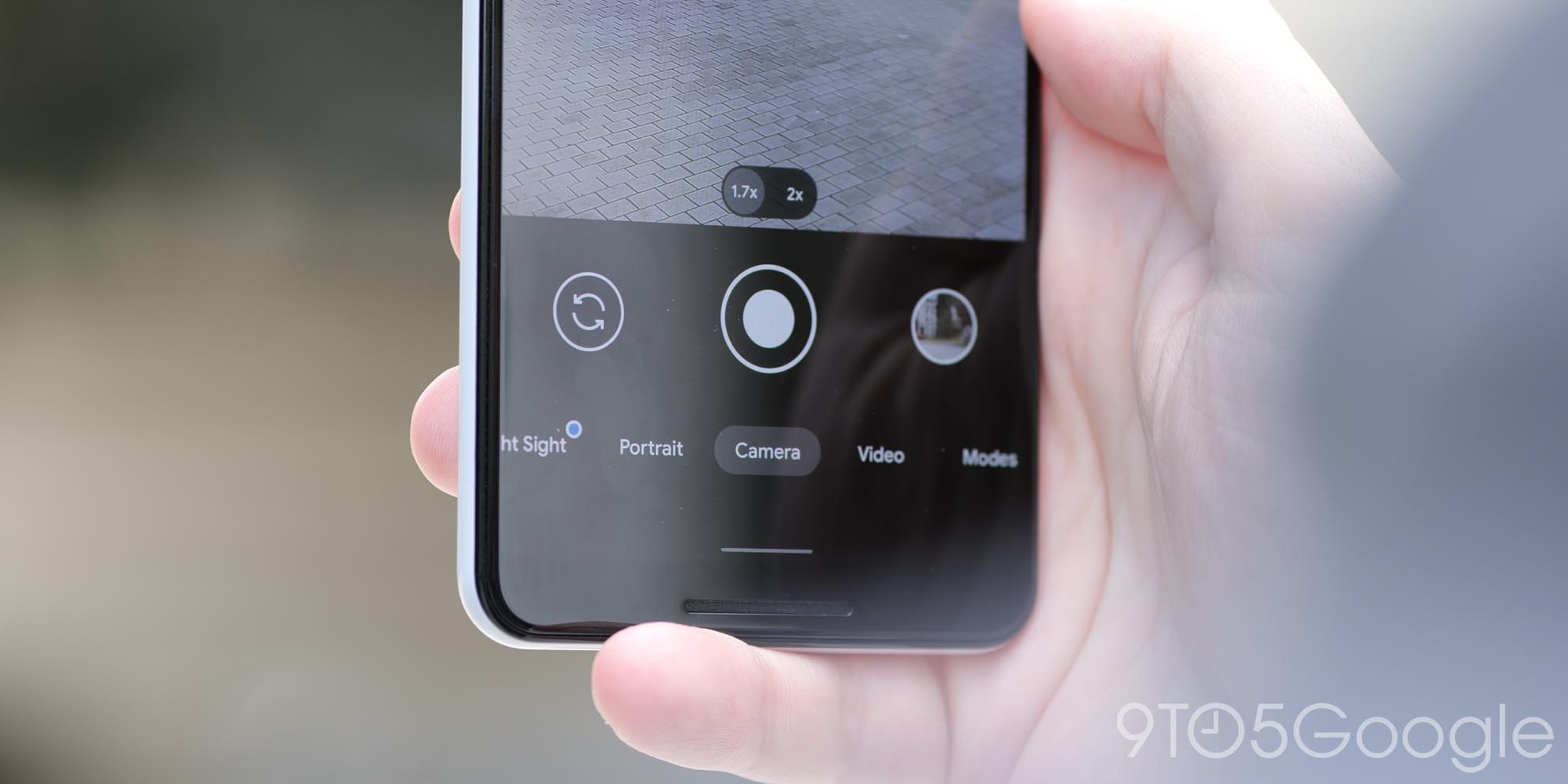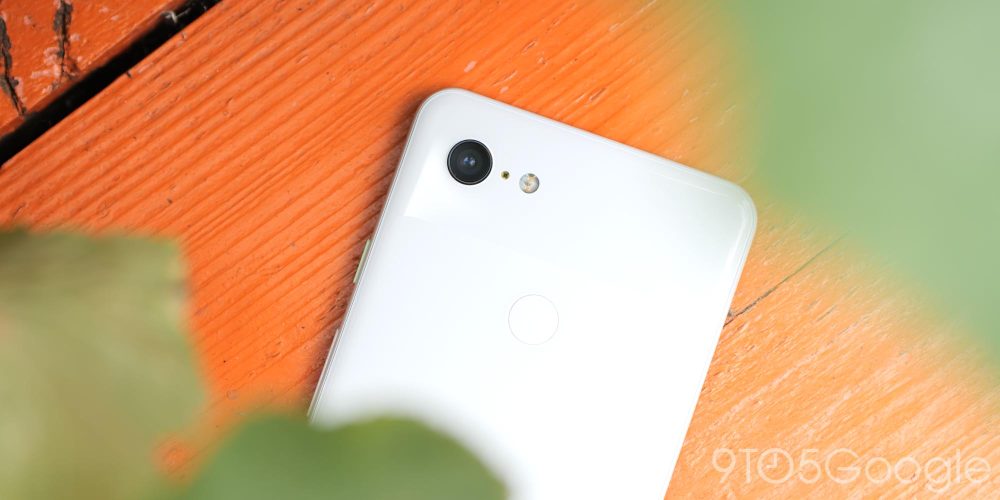
It’s hard to argue that Google’s camera efforts in recent years have stood up despite the persisting with an ageing Sony IMX363 sensor. That said, the move to a bigger, more capable 50-megapixel main shooter has highlighted the Pixel series need to keep pace with the rest of the industry to offer the best camera experience possible.
Table of contents
Video — Why Google needs to keep pace with more regular Pixel camera upgrades
Subscribe to 9to5Google on YouTube for more videos
The flagship camera conundrum
A flagship smartphone should have an excellent camera setup and since its inception, the Pixel series has stood proudly at the top of the camera charts thanks to a combination of solid camera hardware and industry-leading software processing. Google’s lead was almost insurmountable for a while and that statement certainly held up at least until the release of the Pixel 4 series back in late-2019.
Things were sound until the Pixel 5 arrived and while it has a good camera it certainly started to lose sight of the biggest players in the industry. By 2020, many OEMs had caught the Pixel series camera, what’s more, a fair few had surpassed it.
Processing alone can only go so far. And so with the release of the Pixel 6 and 6 Pro, Google has unequivocally shown that an upgraded camera sensor and lens setup is a necessity to compete with the best in the business. As smartphone camera sensors’ sizes and quality increase year over year, it’s, therefore, important for the Pixel series to maintain pace. That means more frequent sensor updates.
I’m not necessarily suggesting that Google attempts to make major changes with each and every device release. That wouldn’t make sense given that the “secret sauce” of the Pixel camera is that all-important post-processing. It’s just important that camera sensor upgrades are treated the very same way as the SoC. That’s especially important given there is an even greater focus on flagship Pixel devices courtesy of the Tensor chip and associated on-device processing improvements.
Software can only go so far


It’s undeniable that one of the core selling points of the Pixel series is the clean, unobtrusive software. While you could argue that the Pixel A-series proves otherwise, software can only take you so far. Hardware is especially important.
Proof of this is the switch from a 12.2-megapixel Sony IMX363 sensor to a Samsung ISOCELL GN1 50-megapixel sensor. There is immediately a noticeable difference, but that alone isn’t actually the full story.
Despite the massive sensor size upgrade, Google continues to utilize pixel-binning to achieve 12-megapixel final images. Without arguing for a dedicated Pro mode, the tuning required with the older flagship Pixel phones has actually affected the current generation — and could hold back the next generation as a result.
Because the Sony IMX363 sensor is relatively small, the software adds a little bit of sharpening during the post-processing phase, the Pixel 6 and 6 Pro have suffered intermittent issues with over-sharpening. The problem has been almost fully resolved with Google Camera app updates but this wouldn’t be a necessary camera processing step so long as higher resolution sensors are utilized.
Effectively, with a larger sensor, you’re given more data points to tune and adjust as you see fit. More data points equals more data to process. This likely explains the re-introduction and integration of the dedicated Pixel Neural Core into the Tensor chip for faster image processing. If Pixel Neural Core improves over time, then larger sensors shouldn’t be an issue. One could easily read this as a move by Google to ensure problems are not encountered should that be true.
As we all know, Google likes data. This helps with those added effects, functions and features that we’ve all come to know and love. The results are not always immediately obvious when comparing the Pixel 6 camera side-by-side with the Pixel 5. That said, look a little deeper, and the differences start to become more apparent.
Previously impressive features like Night Sight have become ubiquitous in the mobile space. A larger sensor also helps with light-gathering. This, in turn, means less time required to boost long-exposure night photos. Samsung, Xiaomi, Oppo, and more have simply increased their smartphone camera sensor sizes and the result is arguably better low-light images with less processing required. This means less of a performance hit for the CPU and all of the potential battery boosts that come with less on-device processing.
The importance of optics

It’s not just the Pixel camera sensor that needs to continually evolve and improve. We need to see optics progression. In recent years, the addition of a dedicated ultra-wide angle lens has been a solid inclusion. Especially as it’s almost impossible to replicate a wide-angle field of view using software alone.
But when looking directly at the introduction of a dedicated periscope zoom lens on the Pixel 6 Pro and it’s easy to see just how this addition has fundamentally changed the Pixel camera in ways that previous generations could never hope to.
In the past, Super Res Zoom has provided a fairly nice solution to optical and sensor limitations without vastly increasing cost. It’s hard to argue that ruly improved optics are an essential feature on a high-end smartphone today — and moving forward.
While Oppo and Huawei pioneered the hybrid digital zoom feature on smartphones, Samsung has leapfrogged everyone with almost unrivalled zoom capabilities and quality. Up to a point, the Pixel 6 Pro can compete directly with the Galaxy S21 Ultra and S22 Ultra. However, a 4x hybrid zoom system is vastly inferior to the 10x hybrid capabilities of Samsung’s best in class.
We’re at a stage where smartphone camera sensors are making incremental gains. It’s the optics where the biggest changes are being made. Zoom is one of the final frontiers of mobile photography and Google can capitalize with a fusion of Super Res Zoom and a little bit of hardware to really challenge Samsung…and the rest.
Very good for video

There’s a major knock-on effect that often gets overlooked when we, as tech media, discuss smartphone camera upgrades and capabilities. Video recording on Android for a long time has lagged behind the iPhone.
It’s certainly true that the gap has decreased in recent years, but for whatever reason, the iPhone is still supreme when it comes to pure video recording quality. It’s almost not up for debate when you see the end results side-by-side. The Pixel line has actually faired well thanks to impressive electronic image stabilization (EIS) and optical image stabilization (OIS), and you’ll certainly get pleasant video clips without the need for a dedicated camera system, but class-leading? Not quite.
Google has traditionally wowed in stills and merely competed in video capabilities. A prime example: It took until the Pixel 5 to add 4K 60fps recording when many other OEMs began adding 8K recording options and more features than you can shake a stick at.
Live HDR for each video frame courtesy of HDRNet is the biggest change, and the result is the processing of 498-million pixels per second. A larger sensor means higher resolution recording is possible. It also has other benefits you might not even be aware of. Because the sensor is larger, it means that the digital crop applied when switching to video — something that is needed for EIS to work effectively — is not quite as pronounced. The end result is higher fidelity without major quality sacrifices.
Video is integral right now and with the best combination of sensor and lenses plus some Google software magic, there’s no reason we can’t get the perfect pocket filming companion.
Unintended consequences: A-series separation
You may be wondering where the Pixel A-series fits into this scenario, as the upcoming Pixel 6a is set to forgo the massive 50-megapixel sensor upgrade and adopt the tried-and-tested setup as found on the Pixel 4a 5G through the Pixel 5a.
From a purely marketing perspective, this could be a way to truly differentiate between the flagship Pixel lines and mid-range efforts. At least until late 2021, buying an A-series device simply removed a few of the nice-to-have features like a high-refresh-rate display, wireless charging, and an IP certification — the Pixel 5a notwithstanding on that last point.
A confusing lineup is not a strong look and the fact that the A-series has offered much of what the flagship Pixel can is both a major positive and a negative. A positive as we, as buyers, get a superb mid-ranger that belies its price tag. A negative for Google, as you would undoubtedly choose the cheaper model given it provides 90% of the “Pixel” experience but at a significantly reduced price.
Creating a distinct line in the sand between the objective “best” and the mid-range could easily be done with the usage of a slightly inferior camera sensor. Google could leverage this by using older sensors on the mid-ranger if or when an upgrade has been made to the flagship camera system. Not only would that mean great camera results but buyers wouldn’t feel quite as short-changed. None of the honed camera tuning goes to waste either, as you get a classic Pixel camera experience if you will.
As much as I’d love the Pixel A-series to continue providing the “flagship” Pixel experience without the associated price, given the change in direction, a product lineup schism was bound to happen at some point if that comes because of the camera, then it certainly would be justified.
Author: Damien Wilde
Source: 9TO5Google



